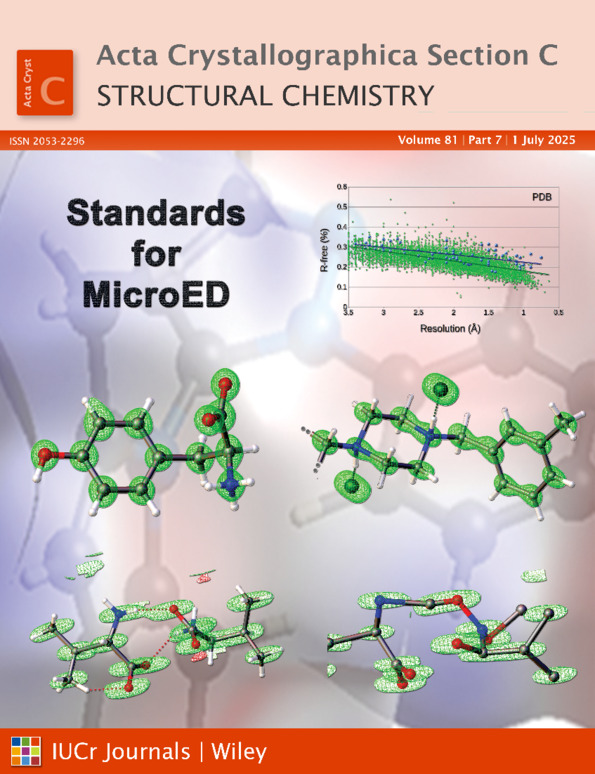Synthesis and structural characterization of ruthenium(II) hydrido carbonyl triphenylphosphine α-diimine complexes with derivatives of 2,2′-bipyridine
Abstract
The structural and emission properties of two ruthenium(II) polypyridyl complexes, namely, carbonyl(4,4′-di-tert-butyl-2,2′-bypyridine)hydridobis(triphenylphosphine)ruthenium(II) hexafluorophosphate, [RuH(C18H24N2)(C18H15P)2(CO)]PF6 or [Ru(H)(CO)(dtbbpy)(PPh3)2]PF6 (dtbbpy is 4,4′-di-tert-butyl-2,2′-bipyridine), and (2,2′-biquinoline)carbonylhydridobis(triphenylphosphine)ruthenium(II) hexafluorophosphate, [RuH(C18H12N2)(C18H15P)2(CO)]PF6 or [Ru(H)(CO)(bq)(PPh3)2]PF6 (bq is 2,2′-biquinoline), were characterized by spectroscopic analysis, X-ray diffraction and density functional theory (DFT) <!?up><!?tlsb><!?down>computational methods, and compared to the parent [Ru(H)(CO)(bpy)(PPh3)2]PF6 complex (bpy is 2,2′-bipyridine). The X-ray analysis of these compounds showed a slightly distorted octahedral geometry of the RuII ion typical for this kind of complex. Classical hydrogen bonds are not observed in the crystals of the investigated complexes. Weak intermolecular C—H…F contacts and, as shown by the Hirshfeld surface analysis, H…H interactions have the dominant contributions in the molecular packing in both structures. In CH2Cl2 solution at 298 K, both complexes show a weak broad emission band attributed to S0←3*MLCT transitions. At 77 K in frozen methanol/ethanol glass, the complexes exhibit strong luminescence of MLCT origin. DFT calculations confirm that the optimized geometries are in good agreement with the experimental structures. In the excited state, changes are observed in the metal–ligand bond lengths, which are consistent with a metal-to-ligand charge transfer (MLCT) character.




